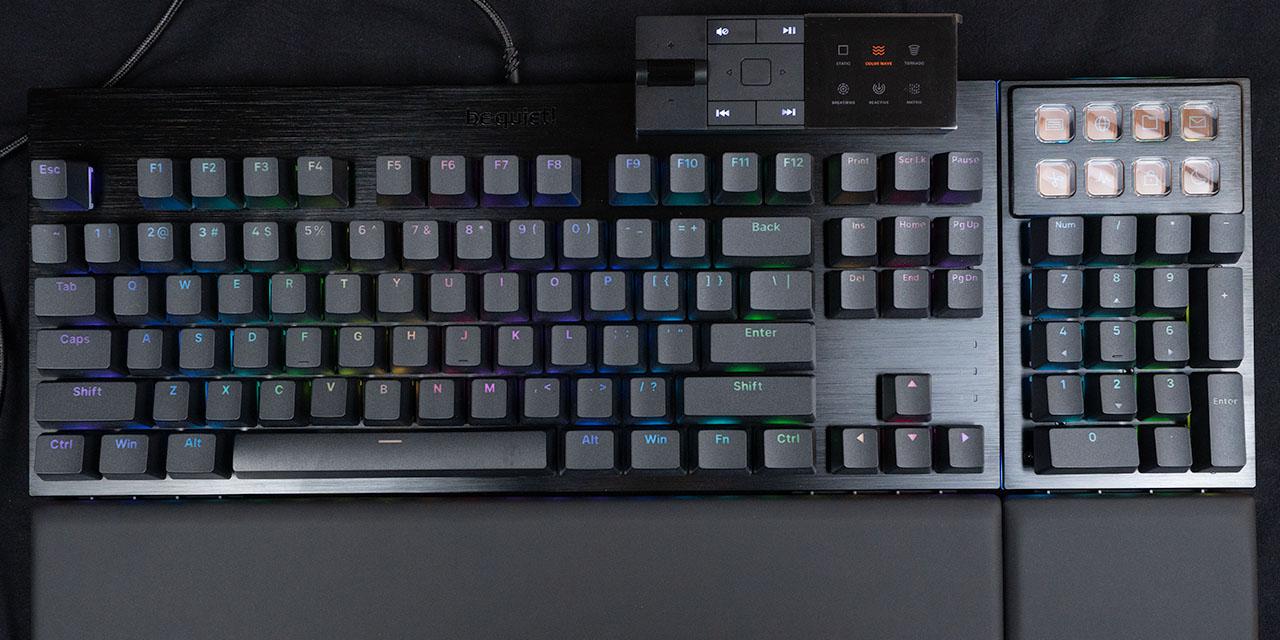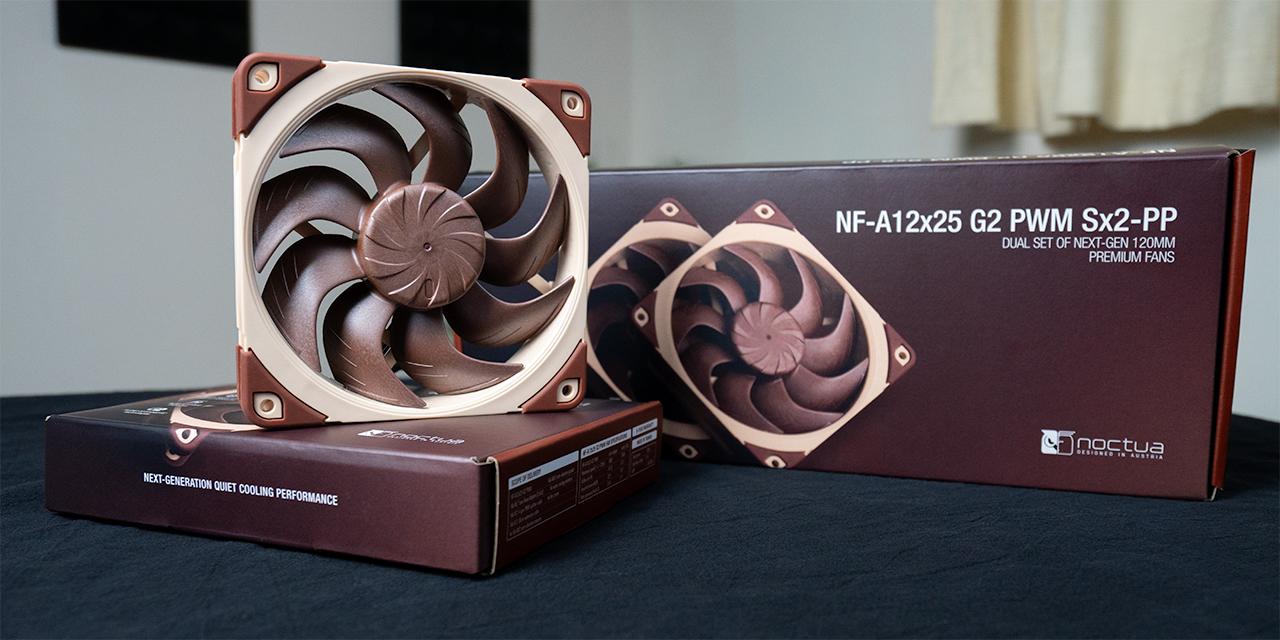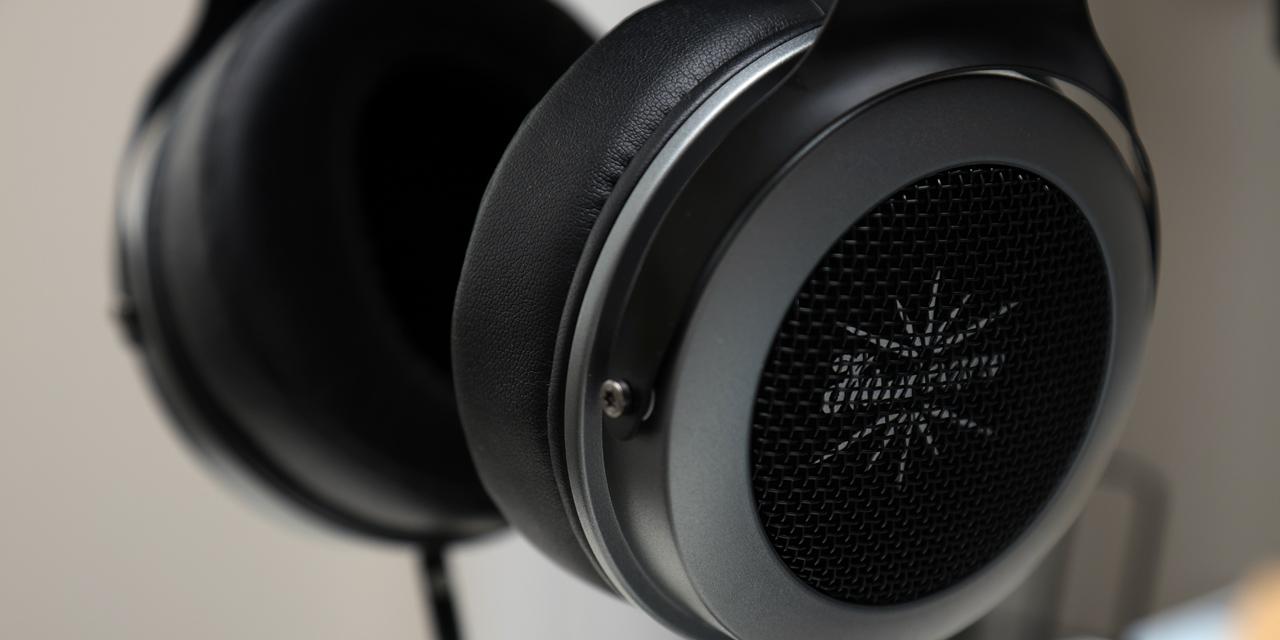Page 2 - A Closer Look - Hardware and Software

When I first unwrapped the Epomaker Magcore 87, my first impressions were positive. Its black keycaps and aluminum frame is not going to really draw many eyes towards the Magcore 87. However, out of the box, there are tinted see-through keycaps on Escape, Backspace, Enter, and space bar. The purple tint gives me nostalgia for Nintendo products like the Gameboy Color in its translucent purple shell. These keycaps are easy to see through, so users can get a better view of the switch and stabilizers under the applicable keys. Based on their characteristics, these are polycarbonate keycaps. Otherwise, the Magcore 87 is very boxy in its edges and corners. Hard corners can be found on every edge, except for the frame's corners having a slight curvature. Even so, the overall appearance is very cubic. It reminds me a lot of the first Epomaker keyboard I reviewed, the P75, even if that keyboard was slightly smaller.
In terms of dimensions, the Epomaker Magcore 87 is 357mm in width, 136mm in depth, and 40mm in height. It is a compact keyboard for a tenkeyless format. These numbers do not change as there are no physical modifiers like kickstands underneath. The keyboard is made with sturdy aluminum and weighs in at a very noticeable 2kg. This keyboard will not move when you slam your table, and require a nonzero amount of effort to lift it up. This is not surprising given its frame and interior materials, as you will see later in the review. As for build quality, there is absolutely no give or flex in the keyboard enclosure and only a slight amount of deck flex. The front edge of the frame of the Epomaker Magcore 87 is approximately 22mm tall, which means you can add a palm rest here, but one is not included out of the box.

The keys on the Epomaker Magcore 87 are a standard North American QWERTY ANSI layout. The one alteration is the additional key on the top function row for a total of eighty-eight keys. This results in the rest of the F1 to F12 keys being slightly more squished together. This additional key is a dedicated mute button. The layout is quite easy to adjust to, as basically all the keys are where you would expect. The only difference from a full-size keyboard is the lack of a number pad, which is increasingly harder to find with these more boutique keyboards. The bottom row has standard spacing with 1.25U keys on all the non-space bar keys.

There are also secondary functions on the Epomaker Magcore 87, but they are not printed on the keycaps. Instead, you can look at the user manual. To access these functions, start by pressing the Fn key on the bottom right side before pressing the specified key. All the top function row keys have secondary functions. The first set are F1 to F6, which are used for system functions. F1 and F2 decrease and increase screen brightness. F3 to F6 launch applications like Mail, Calculator, system browser, and multimedia player. F7 to F9 are media functions for Previous Track, Play/Pause, and Next Track. F10 will launch your default browser. Finally, F11 and F12 decrease and increase volume, respectively.
Function and Windows key lets you lock or unlock this key, which is handy for gaming. Epomaker also supports Mac functions, and they are placed where you might expect on a Mac keyboard. You can switch modes by pressing Fn + A for Windows and Fn + S for Mac. If you make any changes you want to reset, you can hold down Fn + Escape for five seconds, which will revert the keyboard to factory settings. There are secondary keys for lighting controls, but we will explore these later in the review.

The bottom of the Epomaker Magcore 87 is immaculately clean, with only the Epomaker logo in the middle. The corners have rubber pads to keep the keyboard in place. In combination with the hefty weight, you will not accidentally move the keyboard. The top and bottom edges are surrounded by a total of six screws holding the top and bottom aluminum shells together. The only other thing of interest is located on the back edge of the keyboard, which is the USB Type-C port for connecting the keyboard to your computer. This is a wired only keyboard, so there is no wireless functionality or related items here.

On the table, the Epomaker Magcore 87 sticks out with its all-black finish. This is unique to me, as I have a colorful Genshin Impact mousing surface underneath. I really like the look of the see-through keycaps. Its heft is also very noticeable. In terms of layout, everything is where I expect it to be. Granted, I have been using tenkeyless keyboards for well over ten years now, so I prefer it over any full-sized option.
Better yet, the Epomaker Magcore 87 is a treat to type on. As we have mentioned a couple of times, there are induction switches underneath. These are a bit different from typical mechanical keys or even Hall effect switches, but the overall typing feel is still very satisfying. Keystroke travel is smooth without any feelings of scratchiness or squeaking. When you bottom out, the feeling is stiff with a higher pitched clicking without being too loud. There is no spongy bottoming out. Longer keys like the space bar and Enter feel great as well, even when pressed on the edges or over the stabilizers. The audio feedback is different, but it is not something to be too concerned about. There is a deeper pitched sound when these long keys are pressed. Overall, the typing is not as marble-like or deep with the higher-pitched sound, but I really enjoy typing with the Magcore 87.

As we have seen from many double-shot PBT keycaps, the lighting solution on the Epomaker Magcore 87 is not the best, but this one does have a few tricks up its sleeve. For one, the tinted keycap on specific keys really lets light to shine straight through, making for a very visible light. Also, the backplate under the keys are white, which spreads the rest of the lighting better. Even still, the lighting acts more as an underglow for each key rather than illuminating the legends. In the dark, you will not see your keys. The south-facing lights shine around the keycap and are a bit more visible to the user. There is also an RGB light bar in between the six-key cluster and the arrow keys, although these shine with a distinct but configurable pattern. At maximum brightness, the lighting is still nice to see.
Lighting controls can be adjusted via secondary functions on the Epomaker Magcore 87. Once again, you need to press Fn first before the specific key. To change the effect, you can press Insert, while toggling the color is done with Delete. Page Up and Page Down are used to toggle the light bar's effects and colors, respectively. Finally, the Up and Down arrows increase and decrease the backlighting brightness, while the Left and Right keys decrease and increase the speed of the effects. You can also change these settings in the software.

As you already know, the Epomaker Magcore 87 is VIA compatible, but you can also use Epomaker's own Magcore 87 driver. It is available through the manufacturer's website as a 14.2MB compressed ZIP file that can be extracted and installed onto your system. The overall user experience is much more polished than I have seen from past Epomaker products, which is a significant improvement.
As for details, the menus are located on the left side menu. The Button page is where you can set and reassign what each key does. This includes regular, lighting, media, and macros. Next, the Lighting page is used to change all the effects, including static, dynamic, and reactive options. Under Macro, users can create and save their own series of actions. As these are not inductive switches, the Travel Distance menu is used to set up how far you need to press before a key is registered. This can be set on a per key basis. By default, these are all set to 1.5mm, but they can be changed in the range of 0.1mm to 3.5mm in 0.01mm increments. Here, you can also set up fast trigger mode to change how quickly you need to release and press again for each key. This sensitivity can be as small as 0.01mm to 2.5mm. This means you will not need to fully release and re-press each key.

The penultimate menu is called Dynamic Keying, where you can make even more settings that are specific to analog switches like our inductive ones. When you select a key, a sub-menu pops up to let you pick one of six options. DKS, or Dynamic Keystroke is used to bind a single button to up to four functions based on pressing or releasing at two distinct depths. MPT lets you change a single button press into up to three different triggers at three user-specified depths. MT is used to change functions based on either holding or single tapping a key. TGL turns on continuous triggering when you hold down a key. END is used to execute a new key when you press and release a key. Finally, SOCD lets you set a pair of keys that will register the last input between the pair. Do note that Epomaker warns users of these functions may be banned from certain FPS games if they have these active, so use them at your own peril. Even so, it is nice to see these functions available for the analog nature of the keys.
Finally, the About menu is where you can update the keyboard's firmware, change the software language, calibrate the keys, and factory reset the keyboard. Overall, I think this Magcore 87 driver is much more polished with no bugs or hiccups while using it. I am glad Epomaker is taking notable steps to improve the overall usability of their keyboard software utilities.
Page Index
1. Introduction, Packaging, Specifications
2. A Closer Look - Hardware and Software
3. A Closer Look - Disassembly and Internals
4. Conclusion





